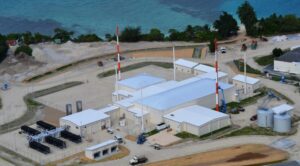
U.S. Space Force (USSF) said that it is looking beyond its Space Fence radar to improve significantly the real-time tracking of objects in space. "The Space Fence radar performs well and meets the requirements for which it was designed," per USSF. "However, the Space Domain Awareness (SDA) mission is becoming more complex and challenging as the environment evolves. Increased congestion, contention, and competition in space drive the need for faster revisit rates, higher capacity requirements, increased sensitivity, and increased resilience…














